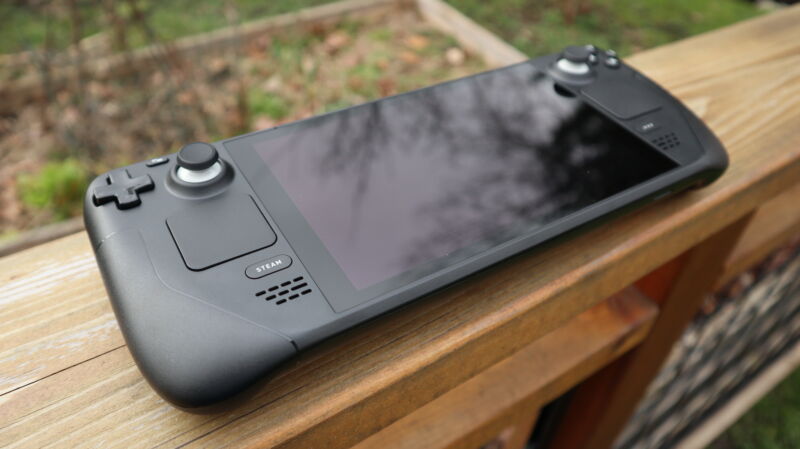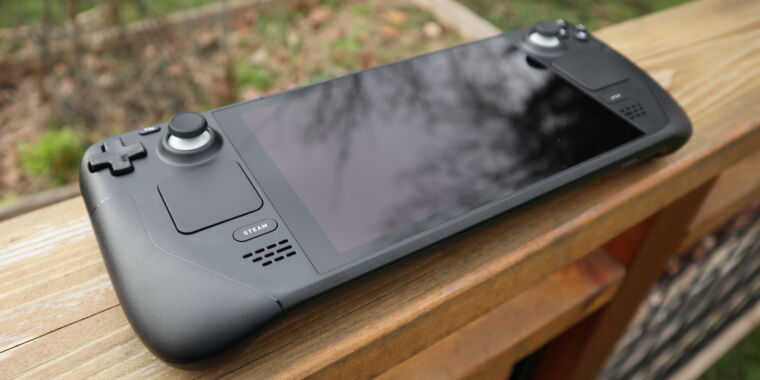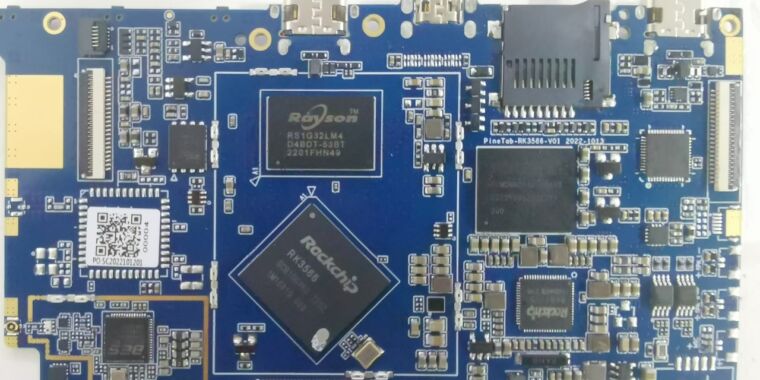
Sam Machkovech
Now that Valve’s Steam Deck has been technically available for about 10 months (and widely available for about two months), customers are increasingly wondering what Valve might have in store for an inevitable “version 2.0” of the handy PC gaming portable. While some players might be looking for a more powerful “Steam Deck Pro,” hardware designers Lawrence Yang and Pierre-Loup Griffais say that battery life and screen quality are the more likely “pain points” they’d like to address in a new version.
That news comes from a wide-ranging interview with The Verge, where the pair of Valve designers hinted that keeping the same basic spec target for future hardware could be valuable. “Right now, the fact that all the Steam Decks can play the same games and that we have one target for users to understand what kind of performance level to expect when you’re playing and for developers to understand what to target—there’s a lot of value in having that one spec,” Griffais told The Verge.
“I think we’ll opt to keep the one performance level for a little bit longer and only look at changing the performance level when there is a significant gain to be had,” Griffais added.
Right now, it’s hard to argue that putting more powerful processors in a new Steam Deck would lead to a “significant gain” for users. As it stands, there are well over 6,000 Steam titles that have been listed as “Verified” or “Playable” on Steam Deck, which means they have little to no trouble hitting the system’s 1200×800 resolution at a minimum of 30 fps. It’s not just legacy titles getting verified, either; plenty of recent AAA releases like Elden Ring, Spider-Man: Remastered, and Death Stranding: Director’s Cut have been fully Deck Verified.
A higher-end “Steam Deck Pro” might be able to squeeze a slightly higher resolution or frame rate out of some of those games, of course. But as long as a critical mass of games is in a playable form on the hardware, Valve seems less interested in increasing performance and more interested in increasing battery life. We also wouldn’t mind if keeping the specs consistent meant a new Steam Deck could be thinner and/or lighter than the current bulky version, but that’s just pure wish-casting on our part.
Updates past, present, and future
Elsewhere in the Verge interview, the Valve designers revealed somewhat stealthy internal changes they’ve made to recently manufactured Steam Deck units. That includes a change in the adhesive holding the battery in place that should make it easier to remove and replace, improving an issue identified by the teardown specialists at iFixit.
A whiny fan from Delta Electronics in some earlier Steam Deck units has also been replaced in newer units by one with thicker foam padding, which you can buy and install yourself if you have the noisy version. The newest Steam Deck units also improve on the feel of the squishy Steam and Quick Access buttons that sit alongside the screen, the designers said.
Valve has tentative plans to roll out additional Steam Deck features via software updates in the coming months as well. Those include the ability to choose a new Bluetooth profile/codec to reduce wireless audio lag and make use of Bluetooth microphones, to start. Steam Deck users may also soon be able to share power profiles, much like they can currently share customized control profiles for specific games, to help maximize battery life and performance through crowdsourcing.
The Steam Deck’s “trippy” dynamic cloud sync feature—which lets you pick up a game elsewhere as soon as you put the Steam Deck to sleep—will still be up to individual developers to implement, though. There are no plans to require such support as part of Valve’s Deck Verified program, the designers said.
The interview’s most interesting tease, though, concerned the possibility of Valve reviving the defunct Steam Machines line. That could mean new third-party mini-PCs designed to connect to a TV, now running the Steam Deck’s new-and-improved version of SteamOS. While the original Steam Machines effort failed for several reasons, they could well be more successful these days if they integrate the vastly improved game compatibility and feature set that have proven so successful on Steam Deck.








